 Your new post is loading...
 Your new post is loading...
When last month’s “Communicator of the Year” can turn into this month’s PR disaster, there’s a lesson for any brand on the perils of flubbing a corporate apology. Any brand can go from hero to zero.
Much has been written in the last week about the missteps of United and its CEO. Given that it was PRWeek that so recently awarded Oscar Munoz as “Communicator of the Year”, I thought the PRWeek postmortem was particularly interesting:
“No company or brand can rest on its laurels when it comes to its reputation. Protecting and enhancing it is a 24/7, 365 days a year undertaking....
When you successfully create a connection with your customers and employees, many of them might stay loyal for life -- and you'll have the chance to increase your overall profitability while building a solid foundation of brand promoters. But achieving that connection is no easy task. The companies that succeed are ones that stay true to their core values over the years and create a company that employees and customers are proud to associate with.
That's where company vision and mission statements come in. A mission statement is intended to clarify the 'what' and 'who' of a company, while a vision statement adds the 'why' and 'how' as well. As a company grows, its objectives and goals may change. Therefore, vision statements should be revised as needed to reflect the changing business culture as goals are met.
Check out some of the following company vision and mission statements for yourself -- and get inspired to write one for your brand....
Just last month, Twitter raised 1.8 billion on the New York Stock Exchange (NYSE) to become the second largest Internet IPO of all time after Facebook, overtaking global giants like Google, Yandex and Zynga.
The online social networking service now trades $41 a share, a huge improvement from its $26 initial price issued by lead underwriter Goldman Sachs. LinkedIn shares are reaching record highs, with share prices now at $224.54, from initial price of $45 a share in 2011. For more updates on the share prices of some famous Internet IPOs, check out the infographic below....
...Not that hard, is it? Apparently it is, for some organizations. Because boilerplate and “about us” pages are among those irritants that vex reporters trying to figure out who you are and what you do.I know. Bless you, you’ve tried. Your chief executive says everybody knows your brand, so instead let’s use that precious space to talk about emergent paradigms. HR wants to cram in something about your commitment to diversity.
Marketing likes the words solution and passionate. And what about sustainability? You don’t want people to think you spend your weekends clubbing baby seals, right?Wrong, class. Jargon annoys reporters and wins you zero customers...
A population of 100,000 is no longer a guarantee that a city like Richmond, California can sustain a thriving daily paper. Readers have drifted from the tactile pleasures of print to the digital gratification of their smartphone screens, and advertising revenues have drifted with them. Titles that once served up debates from City Hall, news of school teams’ triumphs and classified ads for outgrown bikes have stopped the presses for good.
Last January, however, a site called the Richmond Standard launched, promising “a community-driven daily news source dedicated to shining a light on the positive things that are going on in the community”, and giving everyone from athletes to entrepreneurs the recognition they deserve. Since then, it has recorded the “quick-thinking teen” commended by California’s governor for saving a woman from overdosing; the “incredible strength” of the 5ft 6in high-school freshman who can bench-press “a whopping 295lbs”; and councilman Tom Butt’s warning about the costs of vacating a blighted public housing project.
The Richmond Standard is one of the more polished sites to emerge in the age of hyper-local digital news brands such as Patch and DNAinfo.com. That may be because it is run and funded by Chevron, the $240bn oil group which owns the Richmond refinery that in August 2012 caught fire, spewing plumes of black smoke over the city and sending more than 15,000 residents to hospital for medical help....
Corporations have spotted a gaping hole in the market left by traditional media and are attempting to fill it with their own forms of corporate media. But according to former-Financial Times journalist turned media entrepreneur Tom Foremski, corporates are failing to connect with their audiences and there are very few successful examples of the genre....
Younger investment professionals are more likely to use social media as a source of information for investment decisions, according to a survey of 120 stockbrokers, financial and market analysts, financial advisors, individual traders and fund managers conducted by Marketwired. Overall 40% of the financial professionals surveyed by Marketwired said they are using social media as a source of information, but that number increases to 60% among financial pros under the age of 40. The younger financial pros are also three times as likely as the older cohorts to say that the information they get from social media is generally credible. This generational shift may force firms to change their policies about social media, as 49% of respondents say their companies currently block access to social media sites (forcing 39% to consult them on personal electronic devices during the workday)....
Nothing gets management's attention faster than negative media attention. Want to get a company's attention? Go public with your gripes. Few things prompt change in U.S. businesses as much as bad media attention does, new research shows. A study by University of Illinois business professor Michael Bednar found that negative media coverageprompts firms to engage in greater levels of strategic change than previously thought. "As the news media reports negatively about firms, that registers with executives," Bednar said. "And that, in turn, prompts executives to engage in larger-scale strategic change."...
MHPM Project Managers has taken a different approach with the release their first CSR (Corporate Sustainability Report). Instead of the normal text report that other companies release, MHPM created an infographic poster with all of their sustainability information. It serves as a great example to their clients of how even CSR data can be designed in an engaging way. [Innovative model and CSR reporting tool~ Jeff]
I recently participated as the designated “social media expert” as part of a crisis communications case study session at the 2012 NIRI Southwest regional conference. This year’s conference was held in New Orleans and the session centered on a fictitious publicly held bead manufacturing company (apropos for the conference host city) that found itself suddenly facing a major environmental crisis. During the true-to-life exercise, attendees took on the roles of the company’s corporate communications officers and were tasked with implementing all aspects of the crisis response plan. In their new roles, the attendees had to make a number of decisions relating to the immediate actions of the fictitious company, “Beignet Beads & Baubles.” For example, should the company proceed with a press conference with the governor announcing a state grant that afternoon? Should management go forward with a scheduled presentation at a major investor conference in New York the next day? Should a planned announcement of a major plant expansion be delayed? As typically happens with a real crisis, the Beignet Beads & Baubles “crisis team-for-a-day” was given an increasing amount of information to complicate their decision-making process.... [An excellent tabletop crisis PR exercise worth reading ~ Jeff]
The Center for Marketing Research at the University of Massachusetts Dartmouth has conducted a new study of social media usage amongst fast-growing corporations. They get their sample from a list of the fastest-growing private U.S. companies compiled annually by Inc. Magazine. This is the fifth year that they have conducted this study and much has changed over the course of the ongoing research. Originally focusing on content like Wikis, podcasts and message boards, the study has shifted its focus to the popular social channels being used today such as Facebook, Twitter LinkedIn and downloadable mobile apps. With this being the Center for Marketing Research’s fifth year, this most resent update presents a great opportunity to get a rare longitudinal look at how corporations are embracing new technology as part of their communications strategy.... [Interesting study for corporate communicators, social media and PR pros - JD]
Serving multiple audiences is one of the biggest challenges in creating content for corporate websites. Sites with a 'something for everyone' architecture rarely satisfy anyone. The Solution: Sites that are fully segmented by audience type. The “Content Cafeteria” approach to site architecture attempts to overcome these problems. It is based on allowing users to self-identify their audience type and to navigate to a highly customized “microsite” built specially around the needs of that audience.... The Content Cafeteria Model allows users to identify themselves both on the site home page and on every page of every site section. Each section of the site can be thought of as a microsite, having its own navigation, design, messaging, and conversion paths.... Original Article: http://bit.ly/JwiZgM ;
Via maxOz
As the story format becomes a popular digital marketing technique, one tool to complement it will be data visualization–as can be seen by General Electric and Visualizing.org's recent project in which they scanned in 6,000 pages of GE’s annual reports to build an interactive visualization of the company’s history. The end result is a history of GE from 1892 until 2011. The image also lets users search via key terms to uncover stories about innovation over the last century. The keywords are listed under 5 categories: "GE", "Moving", "Powering", "Curing" and "Building"....
|
Corporate communications teams around the world are working hard at the moment to build and present a “corporate narrative” to the world. There are two factors that are the main cause of all this interest and investment. First, companies have become a lot more complex in recent years as they globalize and update their organizational structures; this makes it harder to communicate a single, clear company story. Second, the amount of information available to people, and the ease with which people can tap into niche sources of information based on their interests – personal or professional – make it increasingly difficult to cut through the noise and engage people with a company story. Two Trends But without a cohesive company story, communicators — and their CEOs — fear that messages about the company’s identity and direction will be inconsistent, making the company appear disorganized, or even disingenuous. Early findings from a CEB survey on the topic show two interesting findings about the way firms build a corporate narrative....
A friend works in the legal department of a Fortune 25 company where, apparently, they communicate entirely in corporate-speak.
Here, alphabetized for your convenience, is the best list I have ever seen of corporate metaphors, catchphrases and clichés you would be embarrassed to utter outside a teak-paneled boardroom.
Bonus points to anyone who can use three or more of these in a single sentence....
No matter how you slice it, marketing boils down to communication. It doesn’t matter if the role is articulating the value of your product, demonstrating the intelligence of your team, or broadcasting the success of current customers. All of these jobs hinge on communication.
But something funny happened as the marketing landscape fragmented.
Individuals and teams became highly specialized. The result: one group is “responsible” for communications, but, actually, every team in the company is doing it.
The individual or group running corporate comms is often the shaper of the brand, the liaison between internal and external stakeholders, the keeper of guidelines and approvals. And if you’re in another marketing group, particularly if you need to release an asset to bring in some valuable leads, they can feel like an obstacle.
It doesn’t need to feel this way....
...In much the same way that a mission statement provides overall direction for a company’s strategic decisions, and a style guide directs the way that your brand is presented visually to the public; a social media policy establishes a set of guidelines that govern how various company stakeholders represent your brand on various social networks.
Here are some practical considerations to have in mind when writing a social media policy for your organization....
While a strong brand holds a company’s promise to customers, a company’s reputation gives it credibility and the license to operate. And for consumers, that reputation plays a strong role in guiding their decisions to buy—or not buy—a company’s products. In the U.S., that role is growing, as Americans are steadily learning more about companies before they do business with them.
According to the 2014 Harris Poll Reputation Quotient™ (RQ™) report, 56 percent of Americans actively investigate corporate behavior before they open their wallets. That figure is climbing, as this year’s figure is up 6 percent from 2012. And these information seekers aren’t just learning for their own benefit. This group actively shares what it learns and seeks to influence others in the process.
Consumer sentiment about the myriad of dimensions that make up corporate reputation isn’t an easy thing to gauge, but it’s certainly something for all companies to be aware of—and influence. But it’s not simply enough to know what people think about a company or brand. After all, if consumers are turned off by a particular company, they’re certainly not going to buy its products. The good news, however, is that Americans view corporate America more positively today than they have in recent history....
Some of the worst PR stories for fashion retailers happened in recent weeks. But will it cause any major upset of the business’ financial performance. It’s been a dreadful couple of weeks for garment workers and fashion retailers. There was a glimmer of joy this week when Bangladesh rescuers found a survivor 17 days after a garment factory collapsed and killed more than 1,000 workers. Then last week, teen idol retailer Abercrombie & Fitch stirred up a social media controversy when CEO Mike Jeffries confessed A & F would never make sizes XL for women because the brand is targeted toward “the cool kids”....
Bringing telecommuters back into the office has never created such an uproar! Yahoo CEO Marissa Mayer’s cuts to telecommuting, sparked catcalls from women’s groups, questions from academics, anonymous complaints from Yahoo employees and polarized opinions in the media and at office water coolers around the world. On CNN, four experts practically choked each other trying to advocate their polarized points of view on this story. It’s a fun clip to watch but it showed how strong and divided opinions are on the issue....
My reaction to most company blogs: “Blah, Blah and Double Blah!” I recently taught a class on corporate blogging at the amazing social media marketing graduate program at Rutgers University. In my research for the class, I pored through hundreds of websites looking for examples of the best company blogs in the world. Amid the coal pile that is the state of corporate blogging today, I did manage to find a few diamonds that don’t bore to tears with pronouncements, promotions and product announcements (the Killer P’s)....
Via Janice Tomich
“To touch and improve lives” is the stated purpose of Procter & Gamble. One has to ask: Doesn’t every company want to improve the lives of its customers, employees, and other stakeholders? Would a company deliberately not want to improve lives? ...In an October interview with Fortune, P&G CEO and Chairman Bob McDonald discussed the financial pressures facing the company and outlined some of his initiatives to address these. However, this interview raised more issues for me than it did answer or address them. There’s the problem of the multiple messages that employees hear each day. There’s the 40-20-10 plan asking employees to focus on 40 biggest categories/countries, 20 biggest innovations, and 10 emerging markets. Then there’s a message to focus on “discontinuous innovation,” in other words, radical or revolutionary innovation. So does that mean only discontinuous innovations will be accepted and funded in the next few years? What about other less radical innovations? Where do they fit? Should employees bother recommending anything less than discontinuous innovation?... [Is your corporate message, mission or tag line muddled? ~ Jeff]
Today, we feature a discussion on activist investors with Marc Weingarten, a Partner in the New York office of Schulte Roth & Zabel LLP. Mr. Weingarten is chair of the Business Transactions Group and a member of the Investment Management Group. His practice focuses on mergers & acquisitions, leveraged buyouts, corporate governance, securities law, and investment partnerships. At the conclusion of the interview, you can find LEVICK’s own communications best practices appended... [The challenges of activist investors ~ Jeff]
The moral obligations and competing values of corporations have been debated since the dawn of the Industrial Revolution: How do corporate leaders drive for profit maximization while ethically meeting the needs of communities and citizens? In the age of globalization and worldwide communications revolutions, these issues have taken a new turn. Activists in democratic countries have tried to get governments and companies to halt or limit the sale to authoritarian regimes of technologies that can be used to track, target, jail, or kill dissidents. Advocacy efforts are also being targeted at trying to convince technology companies not to allow their products to be used to spy upon, censor, block access to content, or thwart the public’s use of Internet-based tools that allow people living in authoritarian states to bring their issues to fellow citizens and allies abroad.... [A must-read for corp social responsibility pros - JD ]
In the first part of this IR blog series, we provided some suggestions for incorporating an IR blog into your communications mix. In this post (based on our research), we will discuss what sectors and size of companies (based on their market cap) are the most prevalent users of IR blogs, and what country has the highest adoption rates. We will also include what we consider some best practice examples of companies who use IR blogs to help tell their investment story....
|
 Your new post is loading...
Your new post is loading...
 Your new post is loading...
Your new post is loading...












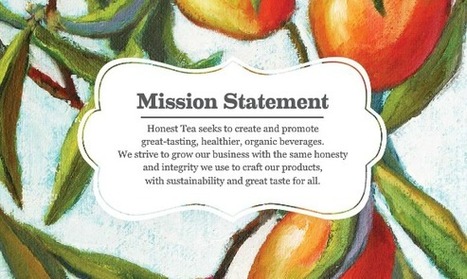
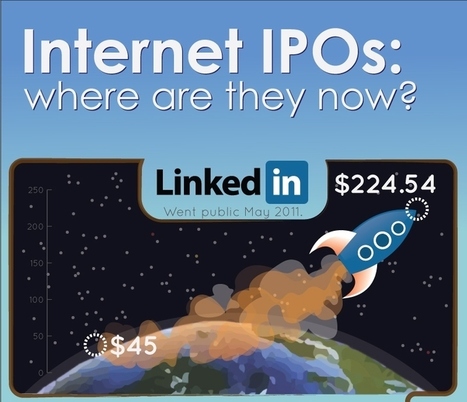









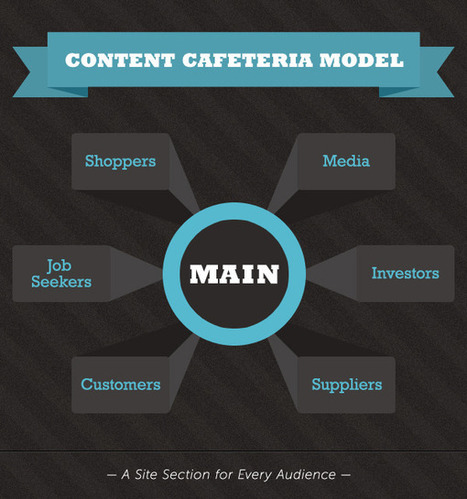



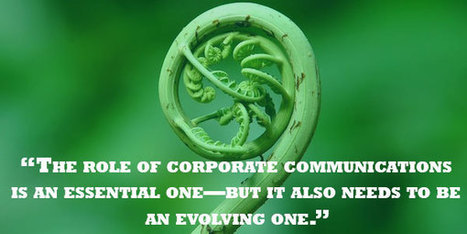

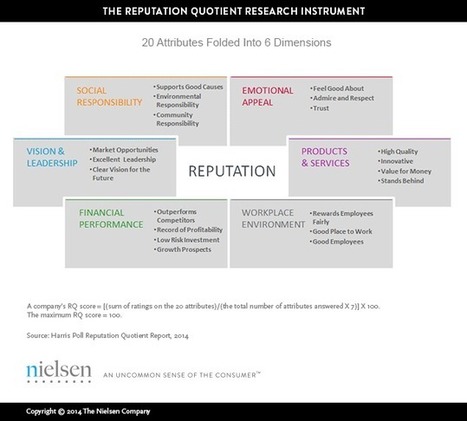





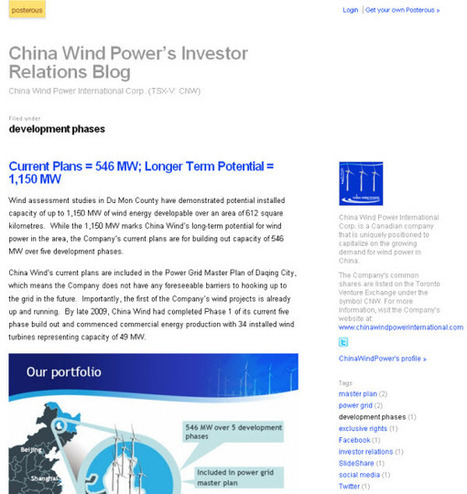





Tom Fishburne nails the state of corporate apologies!